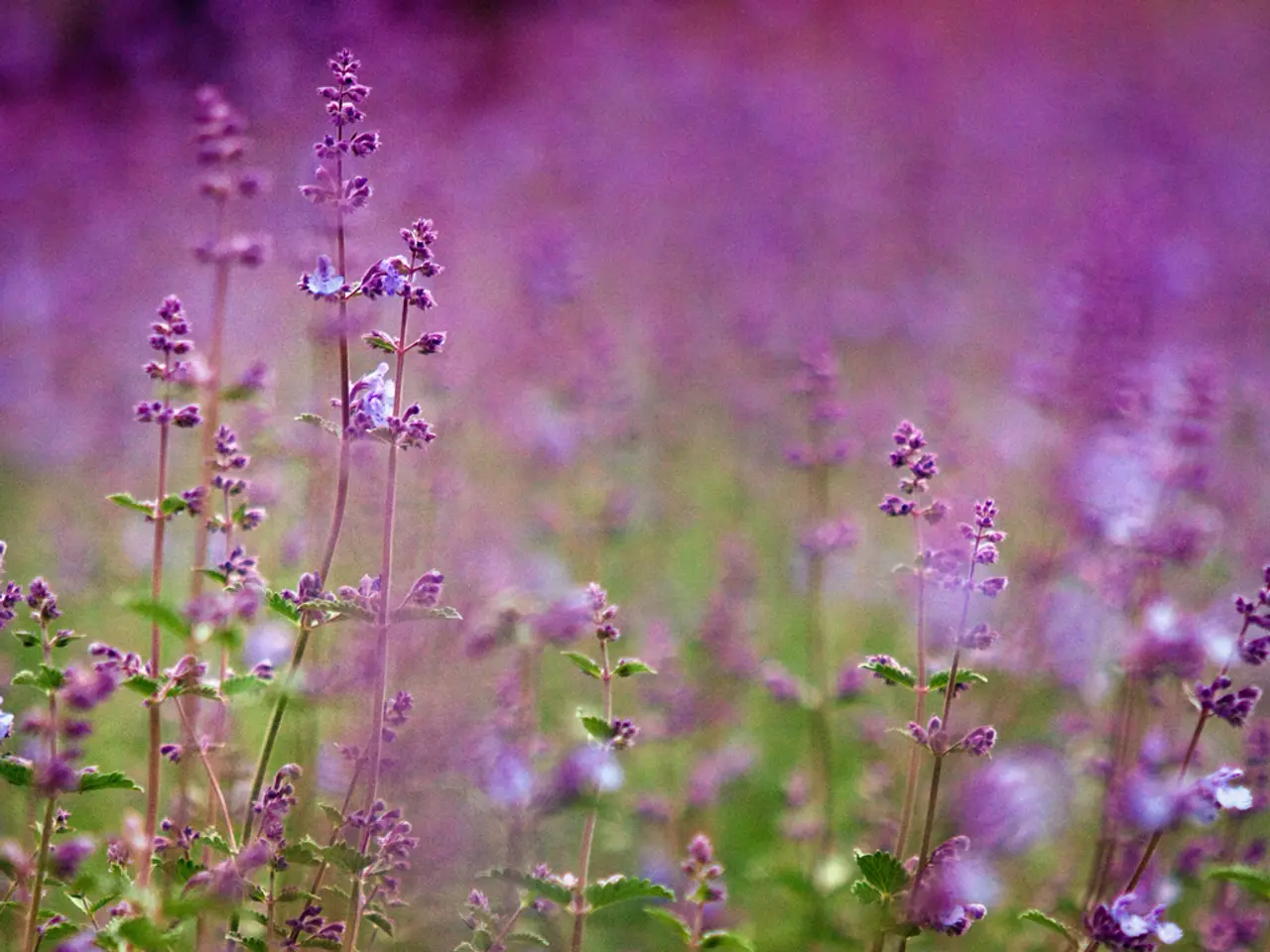Reviving Wilted Lavender: A Comprehensive Guide
Lavender, a popular Mediterranean plant often found in gardens, can sometimes face difficulties due to various factors. This article aims to provide a guide on how to rescue and revive a dying lavender plant.
Common causes for a dying lavender plant include overwatering, underwatering, poor soil conditions such as incorrect pH, temperature stress, root rot, insect infestations, diseases, and lack of proper pruning.
Overwatering often leads to root rot because lavender prefers well-draining soil and can be harmed if the roots stay soggy. To fix this, reduce watering frequency, ensure the pot or garden bed drains well, and consider repotting if root rot is severe.
Underwatering can cause lavender to dry out and stop producing new growth. Mature lavender usually needs watering only during very hot periods, but young plants require consistent moisture that is damp but not soggy.
Soil pH should be slightly alkaline to neutral (around 6.5 to 7.5) to support lavender growth; acidic soil can stress the plant. Improving soil with lime and ensuring good drainage helps.
Lavender prefers warm temperatures but can be damaged by excessive heat or cold. Optimal root growth occurs around 18–24°C (64–75°F). Protect plants from frost or excessive heat.
Potted lavender requires extra care: use a container with drainage holes, well-draining soil, and water only when the topsoil is dry. Avoid keeping it in overly humid or shaded areas.
Root rot manifests as wilted, yellowing foliage and no new growth. Rescue involves removing affected roots and replanting in fresh, dry soil with improved drainage.
Common insects and diseases can attack lavender but are less of an issue in hydroponic or well-maintained soil environments. Still, monitor regularly for pests and fungal infections to catch them early.
Pruning is essential to prevent lavender from becoming woody and to promote healthy growth. Prune annually at the right time (usually after flowering) to maintain shape and vigor, avoiding cutting into old wood too deeply.
Aftercare involves maintaining proper watering—allowing soil to dry out between watering—providing good air circulation, and removing dead or diseased parts to prevent fungal growth.
In summary, rescuing dying lavender requires adjusting watering habits, ensuring good soil and drainage, protecting from extreme temperatures, pruning properly, and monitoring for pests and disease. Consistent aftercare focused on well-drained soil and moderate watering is key to revival and sustained health.
After saving a dying lavender plant, care should be continued until it has retained vigor, moving it to a sheltered location and monitoring moisture and light levels carefully. If you suspect root rot, prune infected roots and replant in well-draining soil like indoor potting mix.
Growing lavender in pots requires special considerations, such as ensuring proper watering, soil consistency, sunlight exposure, and potential fertilization. Mature lavender can tolerate low temperatures of 10 degrees F (-12 C), but newly planted lavenders may not survive temperatures below 40 degrees F (4 C) at night.
Lavender shab is another fungal disease that results in twisted, brown stems and tiny black dots on the stem, easily transmitted and should be treated by pulling out infected plants and destroying them. Lavender needs at least six to eight hours of sunlight per day.
Overwatering lavender can lead to yellowing leaves, a rotting odor, and sodden soil, while underwatering can cause drooping and completely dried-out soil. Spittlebugs and froghoppers can cause damage to lavender plants by sucking sap and can be detected by white, frothy blobs on stems and leaves. Septoria leaf spot is a disease caused by a fungus that weakens lavender plants in late summer to early fall, fostered by humid, wet conditions and results in round spots on leaves.
This article does not feature any products for sale. It is intended as a resource for those seeking to revive their dying lavender plants.
Despite the challenges of dying lavender plants from issues like overwatering, underwatering, and poor soil conditions, proper care can lead to revival. For instance, reducing watering frequency for overwatered plants, ensuring well-draining soil for all, and pruning annually to promote healthy growth are crucial steps. Furthermore, growing lavender accordingly in home-and-garden spaces, considering specific gardening practices such as pH balance and temperature management, could help keep the plants thriving.




